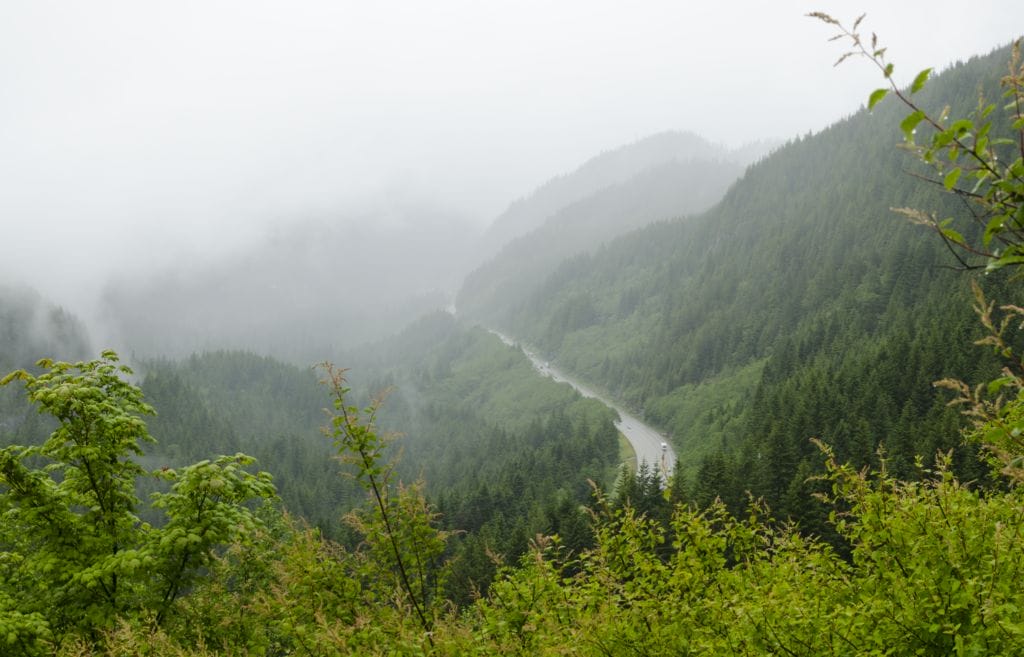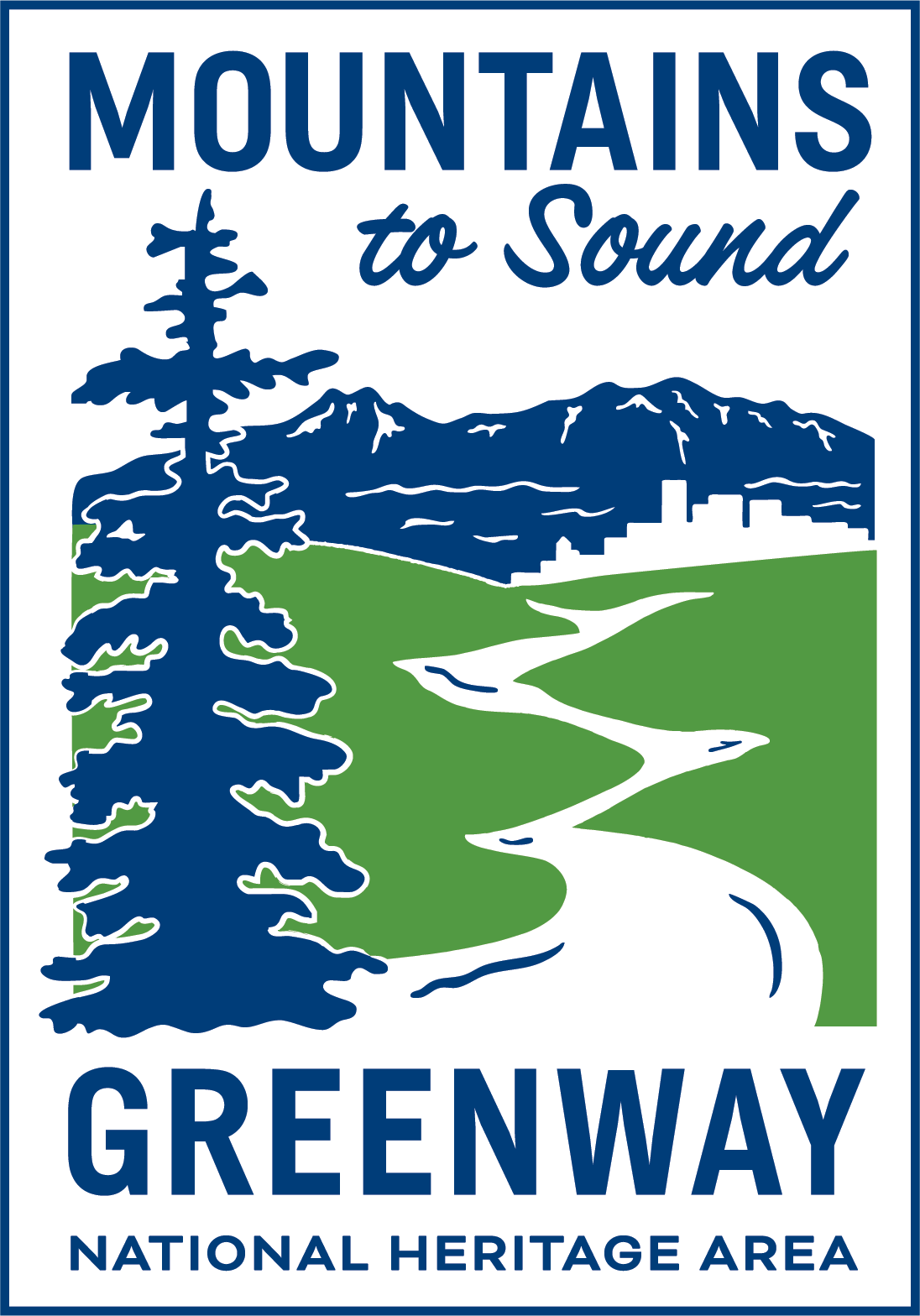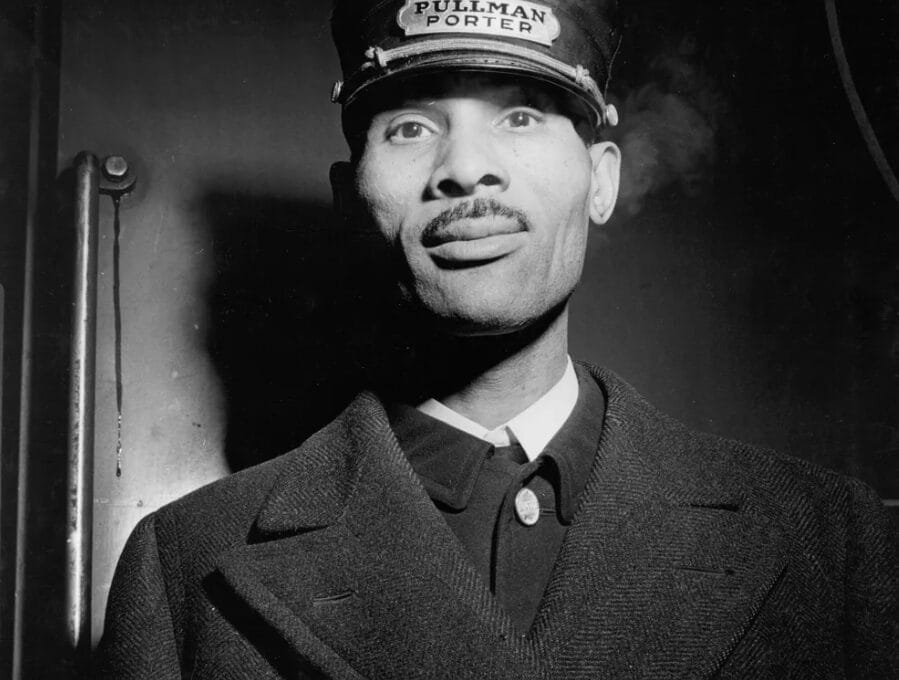How To Create and Share Engaging Oral Histories
Oral history is a powerful tool used within the Mountains to Sound Greenway National Heritage Area to preserve stories, activate archives, and connect communities across generations. While oral storytelling has long been used to share knowledge, modern technology offers new ways to record and share these narratives. However, building the skills to create inclusive, community-driven oral histories remains a challenge. Recognizing this, the Greenway Trust developed a survey to understand heritage professionals’ needs and created the Oral History Workshop in response.
Supported by 4Culture and developed with oral history experts, this virtual workshop guided participants through starting an oral history archive to hosting impactful community events. Experts from Jack Straw Cultural Center provided technical training, while Emily Turner (MOHAI’s Rainy Day History Podcast) and Griff Tester (Trans Rural Lives) shared methods for engaging intergenerational audiences and amplifying underrepresented voices. From youth-led podcasts to events celebrating transgender experiences in rural areas, the workshop offered practical tools and inspiration.
This article recaps the workshop to equip heritage professionals with the knowledge to launch their own community-centered oral history projects.
Table of contents:
- How to Conduct an Interview to Record an Oral History
- Recording Audio Interviews
- Setting Up an Archive
- Using Oral History to Engage Communities
- Best Practices for Ethical and Accurate Oral History
- Creating Community-Driven Oral History Projects
- Helpful Links Heritage Professionals Should Bookmark

How to Conduct an Interview to Record an Oral History
With thorough preparation, a well-conducted oral history interview upholds the dignity of the participant while ensuring their story is preserved for future generations. To start the process, begin brainstorming and researching the topic to create an initial list of thoughtful questions. These questions should:
- Explore the story’s purpose – What makes this narrative significant?
- Go beyond the surface – Asking “why” helps uncover deeper insights.
- Encourage vivid storytelling – Questions that prompt descriptions help listeners visualize the experience.
- Gather essential details – Ask the interviewee to spell their full name, note the date and location, and introduce yourself on record.
- Use written questions to stay focused and on track.
- Help the subject feel at ease – Remind them that the recording is not live and that they can restart any section if needed. Offer water and encourage a relaxed, conversational tone.
- Keep listener interest in mind – What would the audience want to ask? What details make the story come alive?
It’s important to keep questions simple, clear, and logically structured. Avoid starting with overly complex or broad inquiries. Instead, ease into the conversation before delving into core topics. While chronological order isn’t always necessary, ensuring a natural flow will help the interviewee stay engaged. The best oral history interviews feel like engaging conversations. Here are some strategies to guide the discussion:
- Open-ended prompts:
- “Tell me more…”
- “Take me back to the first time you…”
- “What was going through your mind when…?”
- Clarifying questions:
- “What do you mean when you say…?”
- “Let’s be more specific. Are you saying…?”
- “To recap… do you mean that…?”
- Follow-up questions encourage the subject to elaborate and add depth.
- Throughout the interview, make eye contact and use body language to show interest, but avoid audible feedback like “mmm” or “okay.” This ensures the recording remains clean and professional.
Lastly, always obtain a signed release form if required by your organization. This ensures that the interview can be archived, shared, and preserved as a valuable historical resource. By following these steps, you’ll conduct a compelling oral history interview that captures authentic voices and keeps history alive for future generations.
Click here to learn more about best practices for waivers, permissions, and communicating the rights to an interviewee while also protecting their dignity and consent throughout the project.
Back to top
Recording Audio Interviews
Recording interviews is a crucial step in preserving stories, knowledge, and history. With the right equipment and setup, you can ensure high-quality recordings that stand the test of time. In this guide, we’ll cover essential tools, archiving best practices, and strategies for sharing your audio recordings.
- Recorders are essential for digitizing interviews. They come in various price ranges with different features, such as support for different file types (e.g., WAV, MP3), decibel adjustment, microphone plugins, noise reduction, and portability. Choosing a recorder that suits your needs ensures that your interviews are captured in the highest quality possible.
- Microphones ensure that your interview is captured with clarity. The two most used types are condenser microphones, which are highly sensitive and great for studio recordings, and dynamic microphones, which are more durable and suitable for various environments. Reliable microphone options are available for as low as $30, making it possible to achieve professional audio quality on a budget.
- Headphones are used during an interview, to detect background noise, stutters, or interruptions that come up. This allows the interviewer to pause and re-record if necessary. Providing a pair for the interviewee can also enhance the recording experience by helping them stay aware of their own audio levels.
- Digital Audio Workspaces (DAWs) are software programs used for editing and enhancing audio recordings. These programs allow users to cut and trim audio, insert recorded narration, music, and sound effects, and apply effects and plugins to improve overall sound quality. While many DAWs now operate on a subscription model, there are still free options available for those on a budget.
Back to top
Setting Up an Archive
Organizing and preserving your interviews is crucial for long-term access. Implementing a structured system ensures that your files remain accessible and intact over time. Audio professionals use lossless file types such as WAV to maintain original audio quality. This requires more storage space, making them ideal for long-term preservation. On the other hand, lossy file types like MP3 take up less space but degrade in quality over time.
Choosing the right format depends on your storage capacity and the intended use of the recordings. A proper naming system helps locate files quickly and efficiently. A good practice is to include the date of recording, project name, a brief description of the content, and a version number if the file has been edited. Avoid using special characters such as !@#$%^*(), as they can cause issues in certain software. A well-structured folder system helps keep your archive organized and easy to navigate. Files can be categorized by type of project, year of recording, or color-coded categories to streamline access and prevent misplacement. To prevent data loss, follow the 3-2-1 backup rule: keep three copies of each file, store them on two different types of storage (such as external hard drives and cloud storage), and ensure that one copy is stored in a different physical location. This approach safeguards your archive from accidental deletions, hardware failures, or natural disasters.
Back to top
Using Oral History to Engage Communities: Q and A with Emily Turner and Griff Tester
Once your archive is well-organized, there are multiple ways to share it with a broader audience. You can host your audio files directly on your website using a built-in audio plugin or player. Additionally, uploading files to streaming platforms allows people to access your content for free, while podcast hosting sites provide a dedicated space for distributing interviews—some of which offer free hosting options.
Live events create deeper connections with audiences and bring awareness to your archive. Consider hosting events in the space where the archive is stored or collaborating with community centers, libraries, and coffee shops to reach a wider audience. These gatherings provide an opportunity for storytelling, engagement, and discussion around your preserved audio history. During the Oral History Workshop, Emily Turner and Griff Tester shared their insights on how they navigate creating events and podcasts around oral histories to reach intergenerational audiences and foster community.
Back to top
Best Practices for Ethical and Accurate Oral History
Q: What is the best practice for waivers, permissions, and communicating the rights to an interviewee while also protecting their dignity and consent throughout the project?
Griff Tester: “We ensure that participants retain copyright over their stories rather than having them become university property simply because they are stored in the university archive. To safeguard this, we had the Assistant Attorney General of Washington State review our release form. Additionally, we wanted participants to have the right to revoke the non-exclusive license for educational use of their interviews at any time.
After transcribing an interview, we send it to the participant for review, allowing them to remove any content they wish—either immediately or later. Some participants have exercised this option, choosing to share an experience during the interview but later deciding they do not want it included on the website or in other public formats. When this happens, we remove the content from both the transcript and the audio vignettes before posting or updating the website.
Our interview release form acknowledges that we cannot prevent individuals from transcribing or recording sections of interviews once they are publicly available—whether on the TransRural Lives website or in other educational settings.
Our goal is to give participants as much control over their stories as possible while recognizing the risks of public sharing.”
Emily Turner: “Establish rules for what kinds of materials are okay to publish on the internet, preferred terminology for describing holdings or maintaining copyright to cultural property. Standards for Museums with Native American Collections (SMNAC) guidelines for working with Indigenous communities provides some examples of what this could potentially look like, but each community will have different needs and priorities.
For working with minors, some things that I think about are their digital footprint, right to privacy, and that their ability or desire to consent may change as they enter adulthood. Some examples of modifications we’ve made to podcast/promotional waivers include putting limits on how long we will use images of them for marketing purposes and letting them choose how we use their name (first and last initial, first name only, or not at all). The relational work also happens outside of the legal agreement, like letting them pick which photo goes on the recruitment flyer or checking in about which names and pronouns they want used in public vs. private settings.
When possible, I also try to only ask permission for what we intend or want to use the recordings for and describe in relatively plain language how the recording will or will not be used. We want people to feel comfortable participating!”
Q: How do you balance historical accuracy with making oral histories engaging and relevant to modern audiences?
Griff Tester: “TransRural Lives stories contribute to historical accuracy by amplifying personal narratives from a community that rarely has public platforms to share lived experiences. Too often, discussions of trans people and history center non-trans voices. This also connects to historical gaps: trans older adults’ voices are not only absent from mainstream and academic discourse but also underrepresented in queer and trans spaces, which tend to prioritize trans youth voices (an important focus that should continue, alongside the inclusion of elders) and the experiences of trans and queer people in major metro areas.”
Emily Turner: “We always ensure we have a diverse cohort of students who can bring knowledge of the media landscape that heritage professionals might not be focusing on, and fortunately, young people are very media savvy. For example, we have been leaning more into video and web interactives because we’ve learned that podcasts are more popular among millennials but may not resonate with other audiences—staff often learn alongside students how to make their ideas come to life through different formats. In the process, we help them parse through personal opinion and editorializations while helping them find an interpretive vision.”
Back to top
Creating Community-Driven Oral History Projects
Q: What role does intergenerational storytelling play in your work, and how have you encouraged younger people to engage with or contribute to these histories?
Griff Tester: “Intergenerational storytelling is central to TransRural Lives. One of our primary goals is to connect younger trans and queer people with older trans individuals and their stories. These connections have always been valuable but are especially crucial now, as social and political attacks on trans people intensify. To foster these connections, we encourage trans and queer youth to explore trans elders’ stories on our project website. Additionally, we regularly host in-person and online intergenerational storytelling events in collaboration with LGBTQ+ youth centers.”
Emily Turner: “Through the Rainy Day History Podcast, students and heritage professionals work together to find sources during their research process. They pull quotes for storytelling, and occasionally the students interview subjects.” “Students are self-selecting into the program through an application and interview process; we also pay them a stipend and overarching guidance.
Q: Can you share an example of how oral histories have been used to inform present-day activism, policy, or community initiatives?
Griff Tester: “In October 2024, TransRural Lives partnered with Helen House, an LGBTQ+ youth organization in Ellensburg, WA, to host the first-ever TransRural Elders Conference. Twenty-three elders from rural areas in the Pacific Northwest—many of whom had previously shared their stories with TransRural Lives—attended the three-day event, which featured multiple activities involving trans and queer youth.
The opening night, open to elder attendees and community members of all ages, featured One Picture, One Story, where participants shared a photo, and a five-minute story related to their rural identities. The following day, elders took part in resource-sharing roundtables, fostering supportive connections and identifying gaps in local resources. These discussions led to key organizing efforts, including the creation of a Trans Doula Project—a community-led initiative to help trans older adults navigate the complex social, legal, and medical systems involved in transitioning.”
Q: What advice would you give to an organization that is starting its first oral history project, especially on a small budget?
Griff Tester: “I strongly recommend fully involving the communities featured in your project. Engage them at every stage, especially in the early phases that shape the project’s direction. This is especially crucial when working with minoritized communities, whose voices and experiences are often underrepresented.”
Emily Turner: “You can start with a small budget with free editing tools. You can get good sound on a phone/computer recording, lots of online resources for learning as well!”
Q: What are some things heritage professionals should be aware of when having youth help with interpretive work?
Emily Turner: It’s good to develop research and editorial toolkits to help guide their process – our job is to make sure they adhere to it, even if they’re not reading it. It’s good to review their work multiple times at different stages – like in their research notes, scripts, audio. Something that makes it easier for students to focus on the interpretive work is that I handle the ‘official’ or boring bits, which include paperwork, uploading to RSS feed, etc. When working with youth, both the heritage professional and the students they work with have something to gain in the process of cultivating and sharing archives. While students learn how to create interpretive work like oral histories, staff learn from the teens both through project facilitation and by consuming their output.
Back to top
Helpful Links Heritage Professionals Should Bookmark
- Smithsonian Introduction to Oral History
- Smithsonian How to do an Oral History
- National Library of Australia Covid-19 in Australia Oral History Project
- VietStories, Vietnamese American Oral History Project, UC Irvine
- Pulitzer Center, Sample Oral History Questions
- Jack Straw Cultural Center Lake Union Oral History Project
- Smithsonian Archives of American Art Leon Polk Smith Native American Oral History Project
- Your Museum Needs a Podcast by Hannah Hethmon
- Youth radio journalism programs
- Transom – audio storytelling school (online how to’s)
- Podcasts to listen to:
- Shelf Life community storytelling project (local & uses oral histories – connects multiple around a theme)
- Radioactive – youth journalism program KUOW used to run
- How to be American – the Tenement Museum (history podcast with connections to contemporary issues)
Back to top




